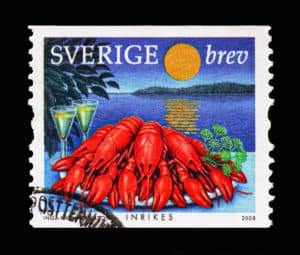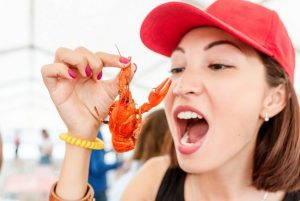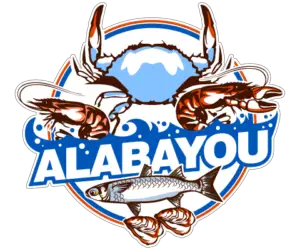With the success of the book Where the Crawdads Sing by Delia Owens, many people are asking the question what is a crawdad?
I’m here to help answer that question. I grew up in Bayou La Batre, Al with a love of everything seafood and I’m very familiar with crawdads.
What is a crawdad? A crawdad, also known as a crayfish,crawfish or mudbug, is a freshwater crustacean that resembles a miniature lobster. They are popular in many countries, particularly in the southern United States, and are often used as a source of food or as fishing bait.
Crawdads belong to the order Decapoda, which includes other well-known crustaceans such as shrimp, crabs, and lobsters.
They have a hard exoskeleton, five pairs of legs, and two large claws, which they use to defend themselves and capture prey.
The claws of a crawdad are proportional to the size of its body, and are capable of inflicting a painful pinch.
Now that you know what a crawdad is, let’s ask the important question do they sing?
Do Crawdads Sing
No, crawdads do not sing. They do not have the ability to produce vocalizations like birds or mammals. However, they are capable of making a variety of sounds that are used for communication and defense.
These sounds are typically made by snapping their claws or waving their antennae, and can be used to signal aggression, attract mates, and warn of danger.
In some species of crawdads, the movement of the exoskeleton or the vibration of specialized structures in the body can also produce sounds.

These sounds are often used to attract mates or defend territory, and are a crucial part of the communication and survival strategies of the species.
In conclusion, while crawdads do not sing, they are capable of producing a variety of sounds that play an important role in their communication and survival.
These sounds, along with their unique appearance and behavior, make crawdads fascinating creatures that are well worth observing and studying.
Can you Eat Crawdads
Yes, crawdads, also known as crayfish or crawfish, are edible and are a popular food source in many cultures around the world, particularly in the southern United States.
They are often boiled and served with a variety of seasonings, such as garlic and spices, or used in dishes such as gumbo and étouffée.
Crawdads are low in fat and high in protein, making them a healthy food source. They are also rich in vitamins and minerals, including vitamins B12 and B6, phosphorus, and niacin.

When preparing crawdads for consumption, it is important to clean and cook them properly to ensure that they are safe to eat. This typically involves removing the head, tail, and exoskeleton, and cooking the meat until it is fully cooked.
It is also important to be aware of any local regulations or restrictions regarding the harvesting or consumption of crawdads, as some species are protected or subject to size or catch limits.
In conclusion, while crawdads are edible and a popular food source, it is important to handle and prepare them properly to ensure their safety and sustainability.
If you are interested in trying crawdads, be sure to check out our complete guide to boiling crawdads.
Where can you find Crawdads
Crawdads are found in freshwater streams, rivers, lakes, and ponds throughout much of the world.
They are particularly abundant in the United States, and are often a popular source of food in the southern states, where they are often served boiled, spicy or in a classic étouffée dish.
Crawdads are also used as fishing bait, particularly for bass and catfish.

What do Crawdads Eat
Crawdads are omnivorous and feed on a variety of food sources, including plants, insects, mollusks, and small fish.
They have a pair of antennae on their head that they use to locate food and to sense their surroundings.
They are also equipped with two large pincers that they use to grasp and manipulate their food.
Importance of Crawdads
In the wild, crawdads play an important role in the ecosystem, serving as both prey and predator.
They are important members of the food chain, serving as a food source for larger fish, birds, and mammals. They also help to control the populations of other aquatic species, such as snails and insect larvae.
In addition to their ecological importance, crawdads also have cultural significance. They are often associated with southern folklore and cuisine, and are often featured in folktales, songs, and festivals.
In some cultures, crawdads are also considered a symbol of good luck, and are often used in traditional medicine to treat various ailments.

In conclusion, the crawdad is a fascinating freshwater crustacean that plays an important role in the ecosystem and has significant cultural significance.
Whether you are looking to add a new food source to your diet, or simply enjoy the natural beauty of these fascinating creatures, crawdads are an interesting and unique species that are well worth exploring.
So, next time you’re near a body of freshwater, keep your eyes peeled for these intriguing creatures, and you might just discover a new appreciation for these fascinating creatures.
Help Support Alabayou
At Alabayou, we believe that preserving the traditions and heritage of commercial fishing families and communities is of utmost importance.
Commercial fishing is more than just a job; it is a way of life that has been passed down from generation to generation for centuries.
However, with real estate development and over regulations threatening coastal towns and communities across the country, these traditions are at risk of being lost forever.
That’s why Alabayou was created, to help preserve and promote the rich history and cultural significance of commercial fishing.
Our mission is to bring together commercial fishing families, communities, and organizations to share their stories, experiences, and knowledge with others.

Whether you are a commercial fisherman, a passionate seafood enthusiast, or simply someone who appreciates the beauty and importance of our coastal heritage, Alabayou is the place for you.
We offer a variety of resources and information to help support and sustain the commercial fishing industry, including industry news, historical articles, and community events.
At Alabayou, we understand that the commercial fishing industry is facing many challenges, but we believe that by working together and sharing our passion and knowledge, we can help ensure that these traditions and way of life continue for generations to come.
Join us in our mission to preserve and celebrate the commercial fishing heritage of our country. Help support Alabayou today!
